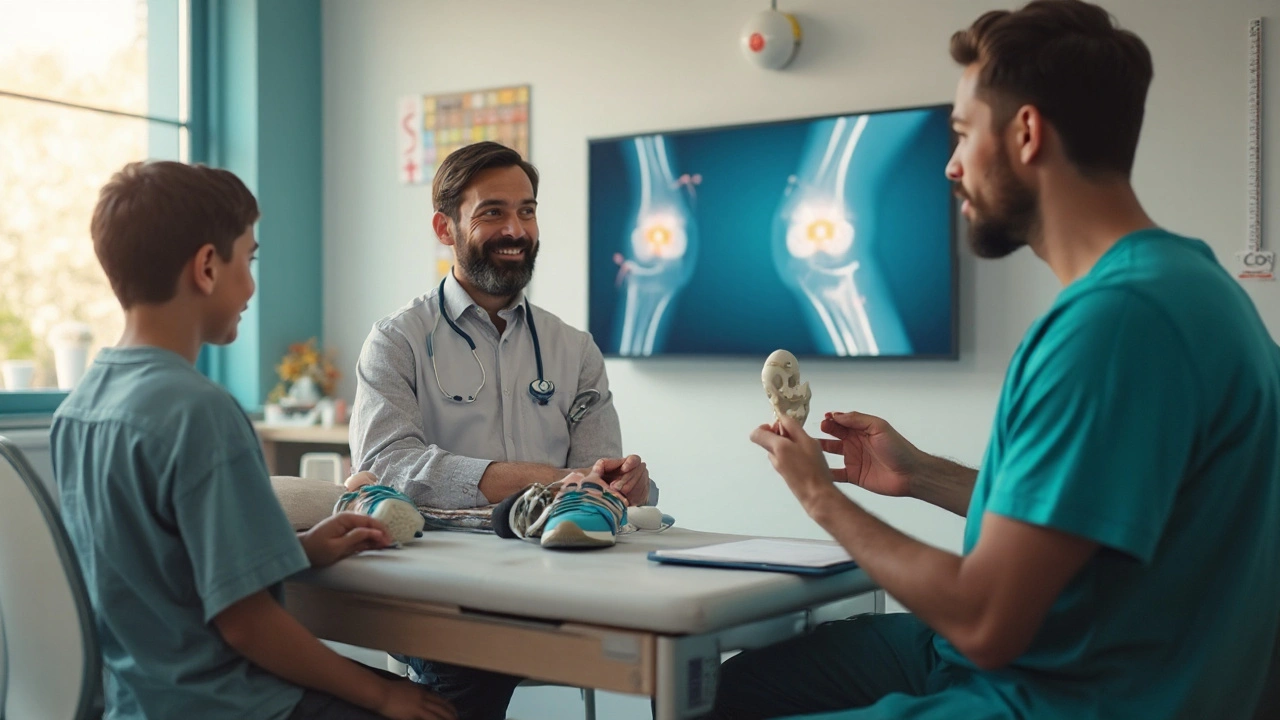Osteodystrophy in Children: What Parents Need to Know
If you’ve heard the term “osteodystrophy” while reading a pediatric report, you might wonder what it really means. In plain words, osteodystrophy is a disorder that weakens a child’s bones and can cause pain, growth problems, or fractures. It often shows up in kids with kidney disease, but other conditions can trigger it too.
What Exactly Is Osteodystrophy?
The word breaks down into “osteo” (bone) and “dystrophy” (abnormal development). In children, the most common form is renal osteodystrophy, which happens when kidneys can’t keep calcium and phosphate in balance. When those minerals get out of sync, the body pulls calcium from bones, making them softer.
Symptoms are usually easy to spot: bone pain that gets worse at night, delayed growth, bow‑shaped legs, or frequent fractures from minor falls. Some kids also feel tired or have muscle cramps because low calcium affects nerves and muscles.
How Doctors Diagnose It
The first step is a physical exam—doctors will check for tenderness, abnormal curves, or height that’s lower than expected for age. Blood tests follow to measure calcium, phosphate, parathyroid hormone (PTH), and vitamin D levels. An X‑ray can reveal thinning of the bone cortex or irregular growth plates.
Sometimes a bone scan or ultrasound of the kidneys is ordered to see how well they’re filtering waste. All these pieces help doctors confirm osteodystrophy and figure out what’s causing it.
Managing Osteodystrophy at Home
Treatment starts with fixing the mineral imbalance. Your child may need calcium supplements, vitamin D drops, or phosphate binders that keep excess phosphate from being absorbed. If kidney disease is behind the problem, dialysis or a transplant can improve bone health dramatically.
Diet also plays a big role. Offer foods rich in calcium—milk, cheese, yogurt, leafy greens—but avoid high‑phosphate items like soda and processed meats unless your doctor says otherwise. Staying active helps too; gentle weight‑bearing exercises such as walking or swimming stimulate bone growth without risking injury.
Regular follow‑ups are a must. Blood work every few months lets doctors adjust dosages before problems get worse. Keep a symptom diary: note any new pain, changes in height, or unusual bruising, and share it at each visit.
When to Seek Immediate Help
If your child suddenly can’t move a limb, has severe bone pain that doesn’t ease with rest, or you notice swelling around a joint, call a pediatrician right away. Those signs could mean a fracture or an acute flare‑up that needs urgent care.
Remember, osteodystrophy is manageable when caught early. With the right meds, diet tweaks, and regular monitoring, most kids can catch up on growth and stay active.
At MedixRX we’re dedicated to giving you clear, trustworthy info about conditions like this. If you have more questions or need help finding a specialist, feel free to explore our other guides or reach out for advice.
Osteodystrophy & Growth Plate Abnormalities in Children: Signs, Diagnosis, and Treatment
Clear guide to osteodystrophy and growth plate problems in children: what it is, signs to spot, tests doctors use, treatment options, and day-to-day support.

